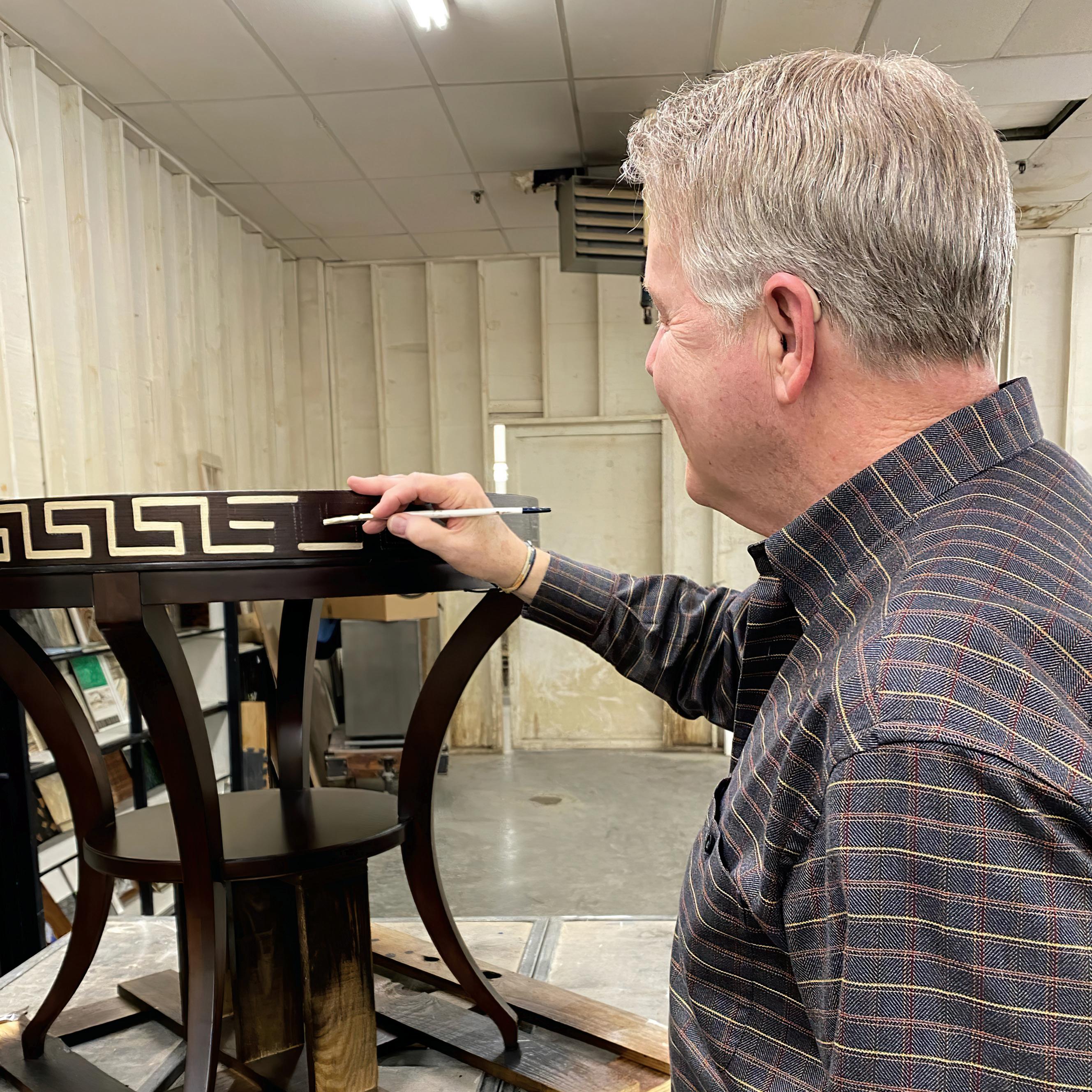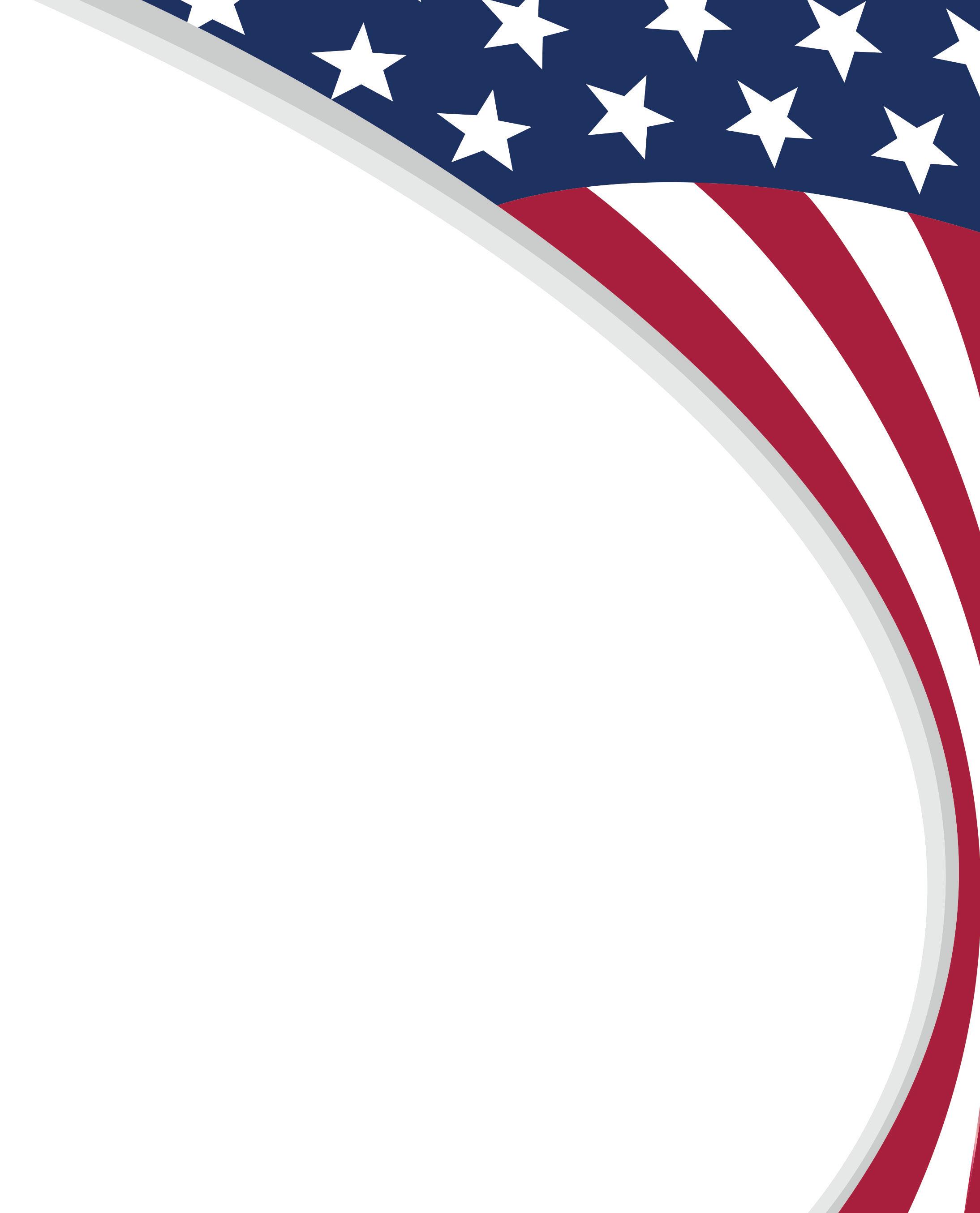
4 minute read
NORTH CAROLINA MANUFACTURING PROCESSES CONTINUED
Hand Cutting Fabric and Leather

Cutting fabric and leather upholstery is an art form that takes years of experience and a skilled eye for extreme detail. Every piece of furniture calls for a unique cutting pattern and every fabric and leather have their own special qualities that require a talented cutter to thoughtfully combine the two and create a matched piece. When cutting fabrics, stripes, plaids, florals, and plains must all be handled differently. When cutting leathers, an experienced craftsman needs to identify and remove any cow branding or defects in the grain.
Hand Forging

Steel furniture may be shaped using either a power hammer or bent using a custom jig. In order for this to occur, the steel needs to be heated in a forge to approximately 1200 degrees, at which point the steel is soft enough to be shaped. Blacksmiths train for months to acquire the skills needed to master this specialized technique.
Handmade Wood Frames & Products
Every day talented North Carolina craftsmen build oneof-a-kind custom wood frames and products to order.
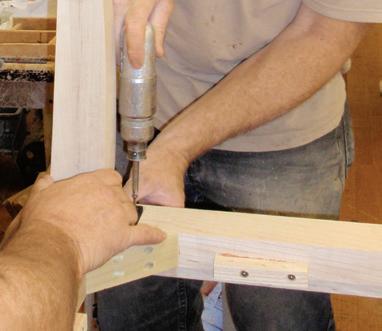
Each piece is made one at a time, crafted individually by hand, in the right size, veneer, finish, and design, with the ultimate goal to create a quality piece of durable furniture that will last a lifetime.
Hand Painting on Leather or Wood

Creative artists start this process by either lightly buffing the leather or sanding the wood, then the artist paints the chosen design completely by hand. After the paint is applied to the piece of furniture, the leather or wood is then treated to protect the painting, which ensures the longevity of the artwork. Hand painting may be applied to almost any furniture surface. Hand painting on leather is commonly placed on the front, back, side of the arm or even on the cushion of a chair or sofa, while hand painting on wood is often applied to bedroom headboards, chests, mirrors, or other statement pieces.
Leather Bullion Fringe Finishing
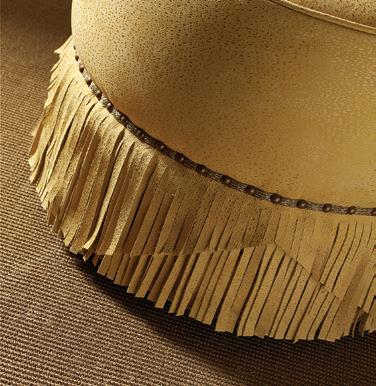
Leather bullion fringe is a type of decorative trim that is applied on the outside of a piece of furniture to portray a frayed look. Originally bullion fringe was made only from plain or crepe cords, but now it is commonly used on leather to create a more sophisticated looking piece.
Leather Hand Lacing
Hand lacing is a type of decorative trim that may be applied to any custom piece of furniture. The leather that receives the decorative trim is laid out and the slits for the lacing are measured for synchronization and then cut. Lace or thread is then delicately woven by hand, flowing in and out of the openings of the cover.
Monogramming
Monogramming has become increasingly more popular on furniture and is a wonderful way to not only identify its owner but also allows them to send a message about their personal style. Custom monogramming is offered inside many North Carolina factories.
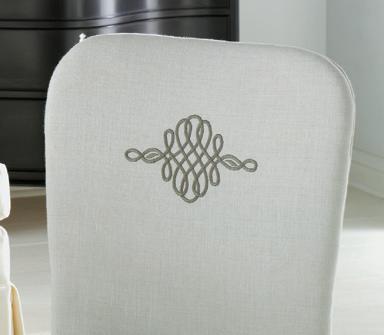
Nail Head Trim
A type of quality finish where decorative nails of assorted sizes, finishes and designs are applied directly onto furniture using high powered nail guns and then refined by human hands for completion. Nail heads not only secure fabric and trim in place, but they also help to finish edges and cover tacks and seams in upholstered pieces. Nail head trim is applied only by highly skilled craftsmen who have studied and learned this technique through years of experience. They are extremely precise in this process.


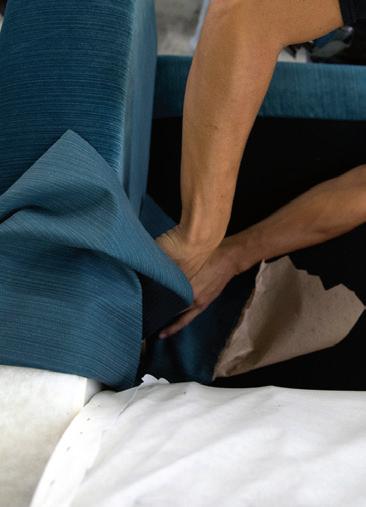

Pattern Making by Hand
Patterns usually start in the research and development department by using scrap fabrics to fit into each new frame which is then measured by trial and error until perfected. The pattern is then hand drawn onto a piece of cardboard or plastic, punched out, and given to the cutting department to use on a daily basis. Patterns are best cut by the human eye in order to match the furniture pattern precisely with the fabric pattern.

Quilting
Quilting is a decorative process that is often applied to both fabric and leather upholstered pieces. Because of the extra fill required to created quilted pieces, they make for truly luxurious seating options. The most common quilting options to accent your furniture are diamond (one seam), double diamond (two seams), and channel (parallel lines) in both horizontal and vertical orientations.
Silver Leafing
The process of silver leafing begins with a smoothly sanded, prepped wooden surface. Silver enamel is then applied by spraying it on in an even wet coat. After the enamel is dried and hand-sanded, a thin layer of glue that is specifically designed for leafing is rolled onto it. Trained decorators then hand apply each square in an even uniformed pattern across this freshly glued surface. Two applications of sealer are then sprayed across the entire surface and a glaze (a pigmented material) is sprayed on and wiped off leaving a soft, rich color to the leaf. A sealer clear coat is then sprayed onto the glazed surface following a clear coat lacquer, giving it a more finished and smoother glossy surface. Soft sanding may be used as a last step if needed.

Upholstery
A highly skilled craft that involves padding and covering seats, chairs and sofas with fabric or leather or a combination of both. Each piece of custom upholstery is bench made by hand by a team of experts specializing in their area of expertise. Frames are built to order, and fabric patterns are cut by hand one at a time in such a way that allows the patterns to meticulously flow and match perfectly throughout the entire piece. This is another North Carolina quality process that is widely requested around the world.
Vintage Leather Burnishing
Quality vintage leather burnishing is a very labor-intensive process that is done solely by hand by an experienced and trained craftsman. After the piece of furniture is fully upholstered, it is then tinted or toned completely by hand to create an aged effect. This process is typically done before any nail trim is applied.
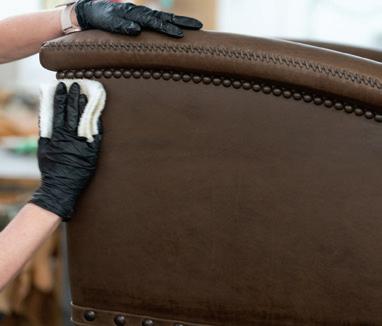
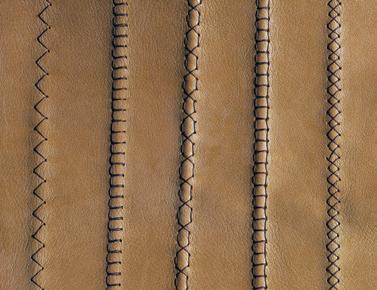

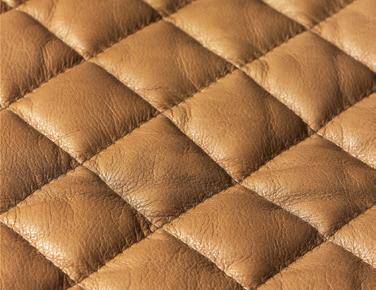
Welting
A welt cord is simply a fabric covered cord that follows the seam of a chair cushion, sofa cushion, or pillows. A welt cord helps give upholstery a more finished and tailored look. The two types of welt cords most commonly used are a self-welt & a contrasting welt. Contrasting welt cords often are an effortless way to add style & pop to any upholstery piece.


